Australian Tropical Rainforest Plants - Online edition
Diplocyclos palmatus (L.) C.Jeffrey
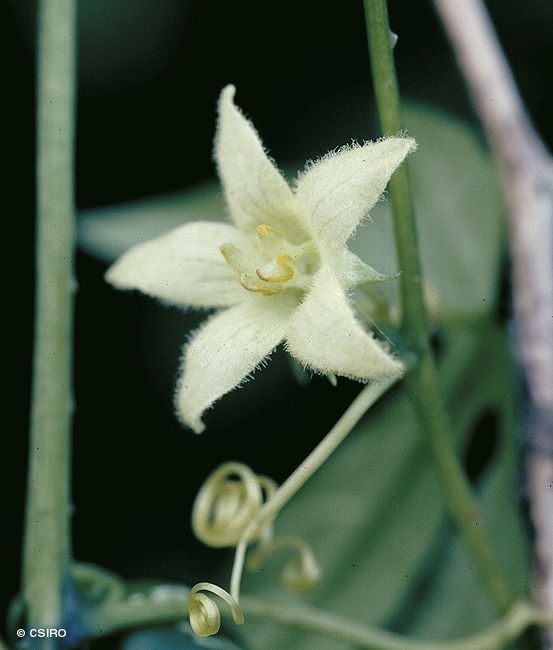

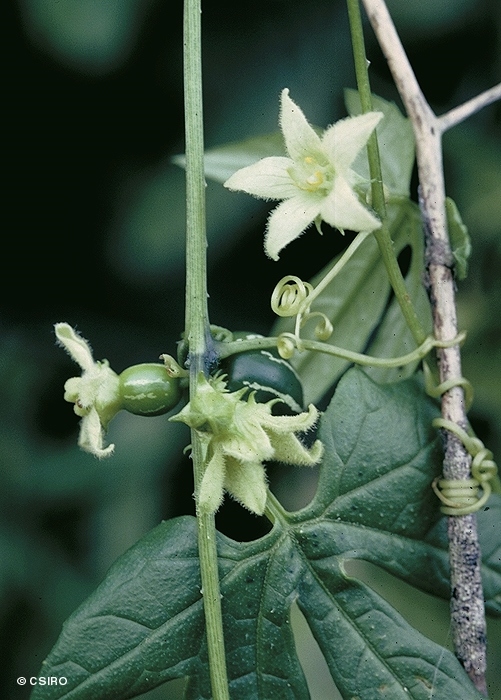
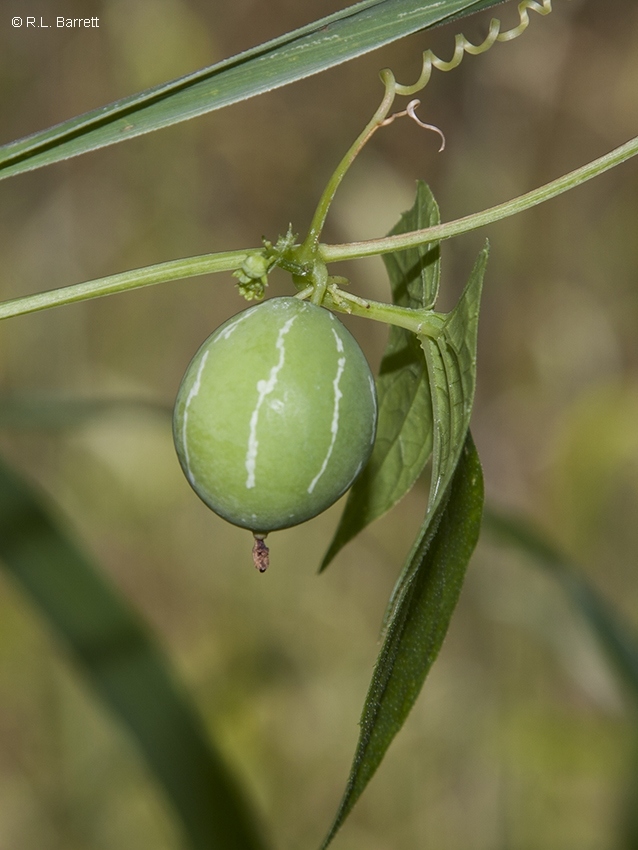
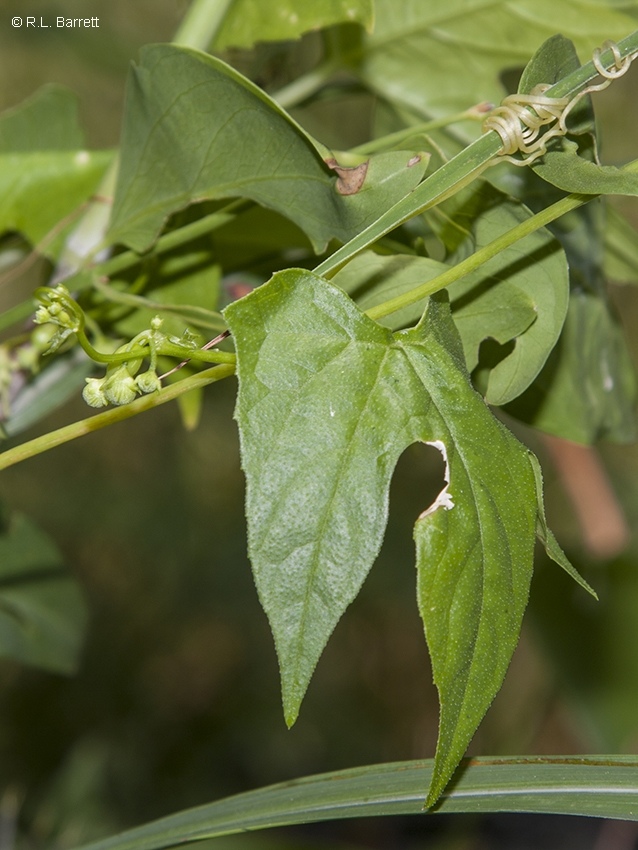
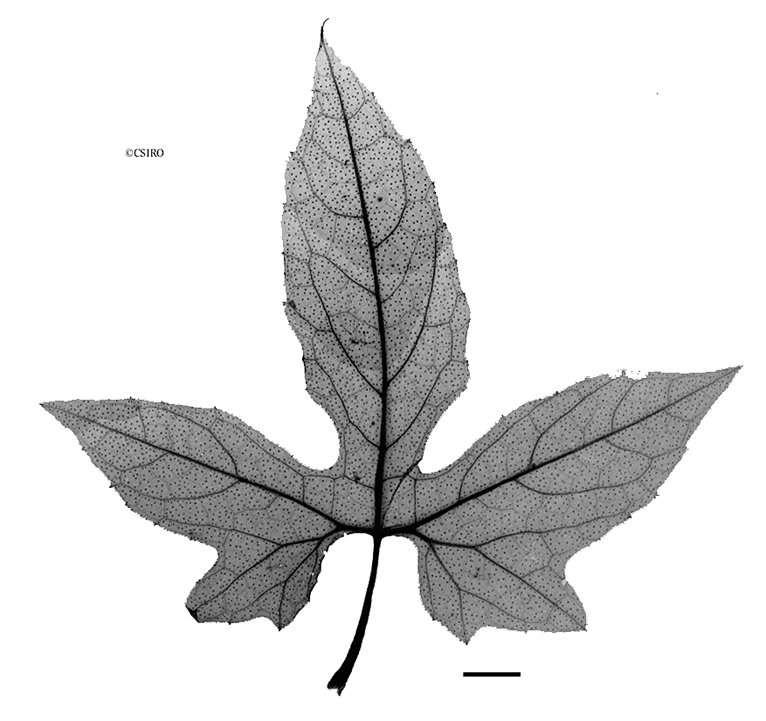


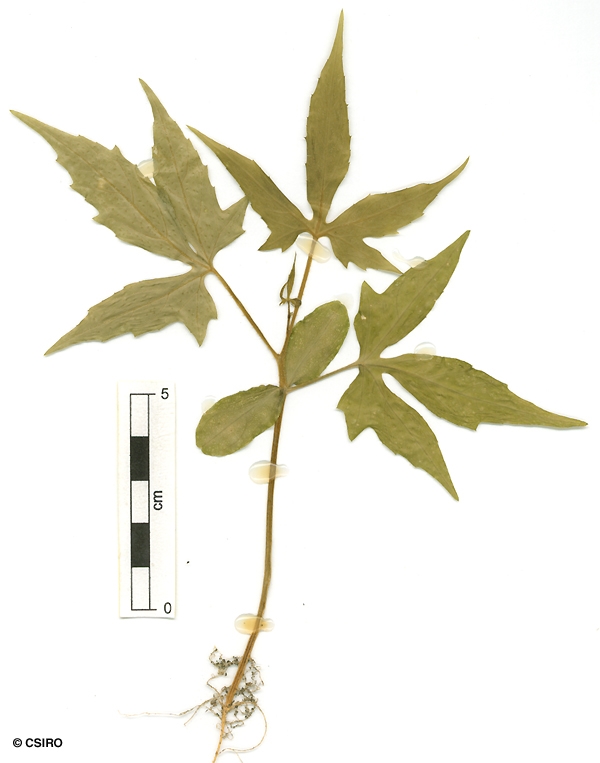
Jeffrey, C. (1962) Kew Bulletin 15: 352.
Cucumber, Striped; Native Bryony; Striped Cucumber
A slender vine not exceeding a stem diameter of 2 cm.
Usually one female flower and three male flowers in each leaf axil. Male flowers about 20 mm diam. Hypanthium 3-4 mm long, calyx lobes about 2 mm long, bases inflated, lobes spreading. Petals 9-10 mm long, densely hairy on the inner surface. Anthers 3-4 mm long, filaments about 2 mm long, very hairy towards the base. Two anthers bilocular, one anther unilocular. Anther locules bent and twisted. Female flowers about 15 mm diam. Calyx lobes about 2 mm long, bases inflated, lobes spreading. Petals about 8 mm long, densely hairy on the inner surface. Staminodes 3, about 3 mm long, densely hairy. Style about 3 mm long and then branching into 3 arms or stigmas.
Fruits ovoid to ellipsoid, about 20-30 x 15-32 mm, surface ornamented with irregular longitudinal markings. Seeds about 6-10 per fruit, each seed about 6-8 mm long, irregularly shaped, vaguely like tear drops or bird skulls. Cotyledons about 4-5 mm long. Radicle straight, very short, about 0.8 mm long, much shorter and narrower than the cotyledons.
Cotyledons elliptic, about 20-26 x 10-15 mm, petioles about 2 mm long. Petioles and stem above the cotyledons clothed in small recurved trichomes or spines. First pair of true leaves deeply 3-lobed or trifoliolate, margins toothed. At the tenth leaf stage: crushed leaves have an unpleasant odour. Leaf blade deeply lobed with 3-5 main lobes each drawn out into a long acuminate tip at the apex. Stem 'hairs' recurved and resemble miniature spines. Upper surface of the leaf blade hispid, clothed in short hairs. Seed germination time 8 to 42 days.
Occurs in WA, NT, CYP, NEQ, CEQ and southwards as far as north-eastern New South Wales. Altitudinal range in northern Australia from near sea level to 1000 m. Grows in vine thicket, monsoon forest, disturbed areas in lowland, upland and mountain rain forest. Also occurs in New Guinea and other parts of Malesia.
The fruits of this species have been suspected of causing illness and death in children. Everist (1974).
This species has been used medicinally in India. Cribb (1981).





